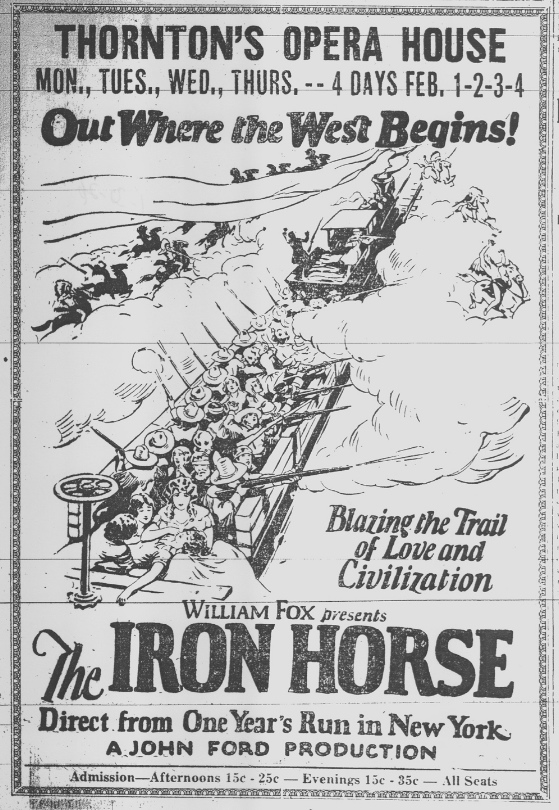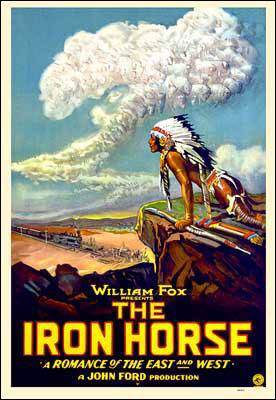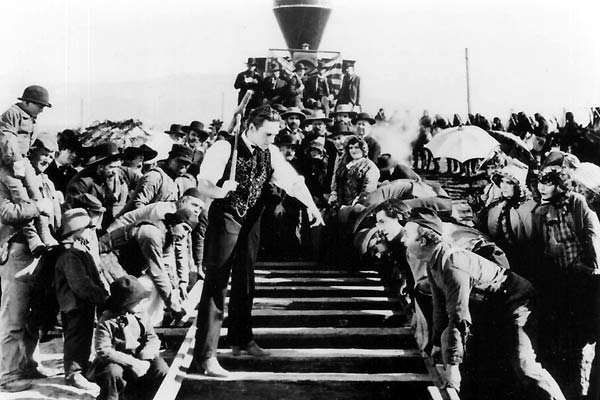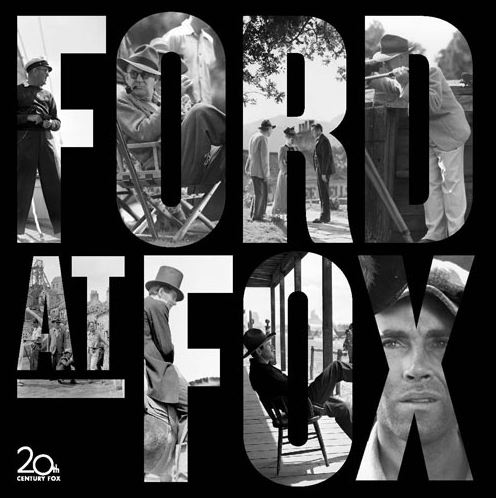
You can look at John Ford's The Iron Horse
in two ways — as a silent melodrama set against the epic backdrop of
the building of the transcontinental railroad, or as an epic poem about
the building of that railroad with some melodrama woven through it to
give it a more coherent structure.
In truth the film is both these things, simultaneously or alternately
— the two halves of its nature are never entirely reconciled.
The melodrama isn't at all bad — it's entertaining and sometimes
moving — though it has one of the lamest lovers' misunderstandings in
all of movies. (Interestingly, the international version of the
film tries, through rewritten intertitles, to make the misunderstanding
more plausible but just succeeds in making it even lamer than it already was.) The real
problem is that the epic poem which hosts
the melodramatic narrative is one of the most sublime achievements of
the silent cinema. It's hard to imagine any melodrama which could
holds its own with such poetry. (It should be noted that Griffith
faced the same dilemma with The Birth Of A Nation, and similarly failed to solve it.)
The epic poem within The Iron Horse
has themes and developments peculiar to itself. Ford is
interested, as he often was, in the process of things, which in this
case centers on the land, the physical fact of the land, which
determined the challenge the road builders faced. Ford is also
interested in the moral development this challenge prompted —
specifically the uniting of diverse peoples in a national consciousness.

The inclusiveness of the film is notable, and notably modern.
Building the railroad unites former antagonists in the civil war
between
North and South. It unites Eastern engineers with Western scouts
and hunters. It unites ethnic groups — most specifically the
Irish
and the Italians, though there are a few scenes demonstrating
good-natured camaraderie between Europeans and Chinese. It unites
women and men, who at one point take
up arms together to rescue some besieged track layers . . . and in the
climax of that scene, a band of light cavalry rides to the rescue —
not U. S. soldiers but Pawnee Indians, allies of the train
workers. The only people conspicuously absent from this American
mosaic are blacks — probably to avoid alienating white Southern
audiences of the time.

The epic poem of America that's at the heart of The Iron Horse unfolds
at a stately pace, even though it's brimful of incident and exquisite
lyrical images. (There's enough pure cinema in this picture to
supply a dozen ordinary movies) Unless you surrender to its
rhythms, are willing
to just sit back and enjoy the sheer spectacle of it, you are likely to
find The Iron Horse tough going. If you're primarily interested in the
melodrama, wanting Ford to get on with it already, you'll find it even
tougher going.
On the other hand, if you let Ford take you at his own pace, show you
want he wants you to see, you'll be deeply rewarded. Here is the
vernacular lyricism of Leaves Of Grass
applied to a truly epic subject and translated into visual terms that
transcend its melodramatic armature. It's an imperfect but genuinely awesome work.

The film is part of the new Ford At Fox
box set, where it's presented in two versions — the American release
and the somewhat abridged international release, derived from a
separate negative made up of second-camera shots and alternate
takes. The American version is far superior but apparently better
print material survives from the international version. You
really need to be familiar with both to appreciate the film fully.
The international version on the set has a first-rate commentary by
Robert Birchard, filled with a wealth of information about the
personalities involved in the making of the film and about the
production.
